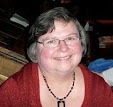The novel concerns the life of twins Desiree and Stella Vignes, who live in a small town, Mallard, Louisiana. The town was founded as a place for light skinned Negroes to settle. However, it is a place that still experiences violent racial divisions. When the twins were very young, their father was murdered by a white mob, which leaves their mother, Adele, left to raise the girls. Pulled out of school to help with the household expenses, the girls decide to run away from home in 1954. when they are sixteen. After a brief period of living together their paths diverge and the separation lasts for over twenty years. The paths that their lives take are also divergent. Desiree marries a dark skinned black man and has a daughter, Jude, who is also very dark. Stella uses her light skin as a way to pass, marries her white boss, Blake Sanders, and also has a blue eyed blonde daughter, Kennedy.
After Desiree can take the abuse doled out from her husband in 1968 she returns to Mallard with Jude and go to live with her mother. Her intention is that it is temporary, but leaving just doesn't work out. She stays to take care of her mother, who begins to show signs of Alzheimers, meets a male companion, Early, and raises Jude there. Jude decides that she wants to go to school at UCLA where she meets Reese, a transgendered male. Stella moves to Los Angeles and raises Kennedy there with a silver spoon in her mouth. Their subdivision must deal with the racial tensions of integration when a black family moves in across the street from the Sanders. Stella lives in fear that she will be found out and she tries to shield Kennedy from the family.
The reader has a distinct feeling that the paths of these two sisters and the cousins will cross somewhere and sometime during the pages that follow. This increases the tension in the novel and makes the book a page turner. Despite some fast forwarding and flashbacks, the book is an easy read, but an uneasy one at the same time. It is a unsettling examination of race relations, stereotyping of individuals, and the effects that lies have upon the human condition. At every turn prejudice screams out from the pages, whether it is the rich vs. poor, white vs. black, or straight vs. the LGBTA+ world. In the end, familial ties are underscored and the idea of going home emphasized. Bennett is a gifted storyteller and the ending of the book leaves a quiet understanding those themes.

